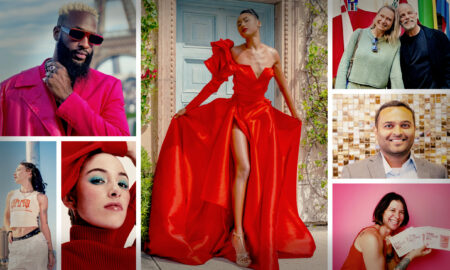
Today we’d like to introduce you to Kent Sheely.
Hi Kent, can you start by introducing yourself? We’d love to learn more about how you got to where you are today?
I initially wanted to study graphic design in college, but in my sophomore year I was recruited by one of my professors into the school’s new Media Art program, which focused on merging traditional art techniques with newer technologies. Part of the curriculum touched on the growing practice of using video games as an artistic medium; as someone who grew up playing games, having been told by teachers that they were a waste of time, this immediately piqued my interest! I became particularly attached to taking photos and making short films within games, and even while I was still in school, I found plenty of opportunities to add to the conversation.
After graduation I kept at it, publishing art online whenever I could. It was a slow climb but eventually, I was getting opportunities to show my work in exhibitions, both in the real world and online, and my career basically took off on its own from there.
Alright, so let’s dig a little deeper into the story – has it been an easy path overall and if not, what were the challenges you’ve had to overcome?
It was a difficult start! Early on it was tough to find places to show my finished pieces except on my own website, mostly because I was still getting my footing in terms of my personal style and presentation. It took a few years of persistence to get my work shown in a gallery setting, but a friend I’d met through social media invited me to display some prints at a festival in Toronto and appear on a discussion panel, and that opportunity plus the chance to meet and speak with some of the more established game artists whose careers I’d studied in school was what really gave me the boost I needed.
There have been other obstacles too over the years; for instance, I’ve had to keep a steady day job to make ends meet, as my art practice itself isn’t always enough to cover my expenses. The important takeaway for younger artists is to never give up—keep practicing, making what you like, and putting yourself out there even when life gets in the way.
Thanks for sharing that. So, maybe next you can tell us a bit more about your work?
Almost everything I make involves appropriating the visual and conceptual language of video games in one way or another. I occasionally design and program my own small games, but more often than not I use existing software to tell new stories and inspire new ways of thinking about the medium. The resulting piece usually ends up as a short film, a series of images, or something interactive, depending on where the project takes me, and there is sometimes a very little trace of the original product left over! No matter what form the work ends up taking I always love to tread new ground.
My process often starts with playing games the “wrong” way or poking at the seams of the facade until something about the experience speaks to me, and other times I’ll be inspired by some current event or subject I’ve been thinking about. This rebellious style of play tends to lead to a deconstruction of the simulation into its base components: The presentation (environments, characters, and interfaces), the code and structure beneath, and the oft-forgotten human layer where a player’s disbelief is suspended and the real world meets the virtual one. I find a lot of inspiration in the surreal moments when I cause one of those elements to stop functioning as the designers intended.
The work for which I’m best known (and of which I’m still most proud) is my older experiments with unconventional in-game photography. I noticed early on that other artists were taking photos by using the screenshot feature in games, so I took the concept one step further and created a modification for “Grand Theft Auto: San Andreas” that gives the player a camera instead of a gun and removes all violence from the game world. Taking that idea further later on, I set up a kiosk where gallery visitors could freely explore a distorted version of the game world and take their own abstract photos. I’ve also gained a reputation for playing war games as a photojournalist with a homemade hack that, again, removes the gun from my hands and only allows me to take photos on the battlefield.
Alright so before we go can you talk to us a bit about how people can work with you, collaborate with you or support you?
For one, I’m always looking for musicians to work with for my video and game-making projects! Aside from that, I’m always open to lending my skills to new projects, especially if they involve digital media. If you’ve got an idea and need help getting it off the ground or just want to share ideas, feel free to reach out to me by email or on social media at any time.
You can support my work in a lot of ways; if you’re a curator, please consider adding me to your next gallery exhibition, as I’m always happy to contribute no matter the scope of the event. If you’re on social media, I always appreciate when people respond to and share my posts, whether it’s a major project or just a short photo set.
Contact Info:
- Website: https://kentsheely.com
- Instagram: https://www.instagram.com/kent_sheely/
- Twitter: https://www.twitter.com/ksheely
- Youtube: https://youtube.com/@ksheely





















